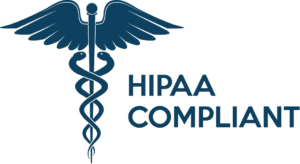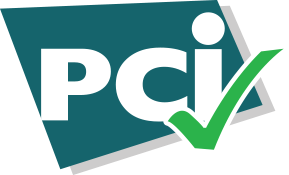Do You Know Your P’s From Your Q’s?
The former President of GH Bass and Vice President of Lord & Taylor sent an email stating “It’s all about the P’s of Retail: Process, Planning, Presentation, Pricing, Productivity, People and the right Product make you Profitable.”
Scott Orenstein was telling me about The Fundamentals of Retail and was interviewing me to train his new business, Brenda & Eddie, on how to execute Ecommerce and digital marketing the way a Google Expert would.
How to Execute the 7P Retail Strategy in Digital Marketing:
1. Process
Ecommerce is a series of processes and interconnected systems that all must work together in unison. Prior to attempting to set-up marketing and advertising campaigns to drive traffic to a website, you should first beta test that your ecommerce store actually performs. This consists of a series of controlled tests where you send X amount of visitors to the site and determine how many of those customers progress through the shopping cart and into the purchase phase.
Benchmark the Conversion Rate
Conversion rate represents the number of visitors out of 100 that turn into paying customers. For example, if the website has 500 visitors and 100 convert, the website conversion rate equals 20%.
Now, 20% is an unrealistic number for most ecommerce stores as the average ecommerce conversion rate is between 1 – 2%. Websites that have an active a/b testing strategy being executed oftentimes have conversion rates 500% more than the industry average.
2. Planning
Constructing an effective media + content plan while knowing your customer’s purchasing behaviors and the times of year that generate the highest yield are critical. This data can be found in near real-time with Google Analytics.
3. Presentation
Persuasive copywriting, graphic design strategies to move the visitor’s eye into the call-to-action, the color black, the color red, and the psychology of color and the influence on purchasing behavior, are all very important to consider when building an ecommerce sales funnel. Understanding the key performance indicators of your how you present your products can be understood from user experience metrics such as time on page, bounce rate, exit rate, and total revenue. This is also important when selecting Google Ads placements, i.e. a targeted placement from a hand-selected website that brings you buying customers.
4. Pricing
Bryan Tracey of Entrepreneur Media said “Be open to the possibility that your current pricing structure is not ideal for the current market. Be open to the need to revise your prices, if necessary, to remain competitive, to survive and thrive in a fast-changing marketplace.” A/b pricing tests using pricing technologies would be one way of establishing appropriate price points as the market moves.
What most ecommerce retailers fail to recognize is the simplicity the internet affords the user with the easy click of the back button. If the user experience or product is not what the customer wants, they hit the back button and will find it within a few clicks of the mouse. Make sure your ecommerce store is not encouraging the use of the back button as you want to monitor the beginning, middle, and end and provide a seamless purchasing journey.
5. Productivity
In ecommerce, productivity means generating traffic that travels all the way to the shopping cart and completes a purchase. Other desirable online productivity would be social engagement, social contests, and peer-reviewed content and videos.
Engaging customers and making transactions sounds easy but is harder than you think. Test new markets with a set budget and determine the average conversion for the website. Benchmark the conversion rate for each marketing effort against the site average and use that data to continually enhance your efforts on all channels.
6. People
The analytics in online marketing and website analytics allow us to identify the exact customer profile that brings you your best, highest margin customer. No focus groups or other opinion-based customer research is needed. High-level marketers are able to target customers by demographics and specific behaviors with the lowest CPA and highest margin. Do not blast your ads out “shot gun” style, reaching any and all that are in proximity. Instead, consider laser-sharp strategies that are highly targeted and overall more effective.
7. Product
The metrics to test if your website sucks are bounce rate, time spent on the page, and page abandonment rate (exit rate). Ecommerce websites need to have analytics revenue tracking so you can determine the exact keywords that produce revenue. Only optimize keywords that have proven to be profitable. This first requires testing your keywords to know the exact conversion rate and cost-per-acquisition of each customer. At Funnel Science, we have found that on average, only 3% of any business’s keywords will produce conversions. If your product sucks, people will not buy it. If your WEBSITE SUCKS, people will abandon your site and think your product and business suck just because of your sucky website!
If you do not test the keywords of your products first, you will have poor sales.
= Profit!
Profit only comes when you connect the customer with a product they desire and great web technologies. One of the fastest ways to increase your profit is to A/b test your keywords to determine the words that generate the highest conversion rate. Allocate your marketing dollars to the words and sources that have the highest conversion rates and pause your campaigns that do not perform. Setting your PPC ads to auto-pilot is a surefire way to miss out on this effective tactic, so beware.
Profit comes from a/b testing every keyword, ad, and landing page. High margins come from filtering out where the waste comes from. You need to know the conversion rate by every keyword and every source. Then you need to know your cost-per-acquisition and the sales to close ratio by source.
Now that you’ve learned how to apply the 7P’s of retail marketing in your digital efforts, prepare to see better results and higher sales. Need help? Give us a call for a consultation: 972-867-3100.




